Waikiki Beach—Hawaii’s most famous stretch of iconic sand—is in trouble. Known for its calm, turquoise water, and legendary surf spots, Waikiki Beach draws millions each year. But the shoreline is again slipping away due to a combination of factors, including relentless erosion. State tourism officials now warn that Waikiki’s days might be numbered without serious intervention.
The Department of Business, Economic Development, and Tourism (DBEDT) is stepping up, calling for immediate action to safeguard Waikiki Beach’s future.
“Waikiki Beach needs to be restored and maintained.” — Hawaii Tourism head Jimmy Tokioka.
The long and unending fight to keep Waikiki Beach afloat.
Saving Waikiki Beach has been a century-long project. In the early 1900s, sand was shipped from California to restore Waikiki, a process that was repeated for decades. Seawalls and groins were built to keep the sand in place, but these barriers often disrupted Waikiki’s natural sand flow, causing new issues and an endless cycle of repairs.
Fast forward to 2022, when Hawaii brought in thousands of cubic yards of new sand for the latest fix. But erosion remains stubborn, and the beach continues to narrow in places. Officials say it’s time for a different approach—one that’s sustainable and won’t leave Waikiki back at square one every few years.
What’s the state’s next Waikiki Beach plan?
DBEDT is launching a multi-pronged approach to stabilize Waikiki Beach. This includes areas fronting the following hotels:
Halekulani and Sheraton Waikiki stabilization: Large-scale efforts here will add new sand and install structures to keep it from washing away. This is a critical fix to prevent further narrowing.
Fort DeRussy (Hale Koa) redistribution: The beach here is piling up with sand on one end while eroding on the other. The state plans to move sand where needed to keep the shore consistent and accessible.
Regular replenishment at Royal Hawaiian: Known as Waikiki’s heart, this beach will see ongoing sand pumping every few years to keep it stable.
Kuhio Beach (Moana Surfrider to Zoo) modifications: This area faces unique erosion challenges, so the state plans additional changes to help manage shifting sands.
Each project has its own set of challenges—and none are cheap. But without this intervention, Waikiki Beach’s future looks bleak.
The big question: is this enough?
Even with these bold moves, some experts and locals worry about the potential impact on marine life, coral reefs, and the beloved surf breaks that define Waikiki. Adding groins and sand-pumping measures has stirred controversy, with critics saying it could alter wave patterns and harm local ecosystems.
Others argue that Waikiki Beach deserves a radical rethink. In parts of California, for instance, beach dunes and native plants have been used to fight erosion with impressive results. While Hawaii hasn’t yet adopted these nature-inspired methods for Waikiki, many believe it could be the next step.
Here’s what’s at stake at Waikiki Beach.
For Hawaii, this is about more than just a popular beach. Waikiki’s shoreline supports Hawaii’s only significant economic engine—tourism. It’s also a beloved gathering spot for residents, surfers, and ocean lovers. But preserving this icon is expensive, and the clock is ticking away.
Whether you’re a visitor planning a Waikiki Beach getaway, a resident with deep roots, or simply love here, Waikiki Beach’s future is important to watch. As the state takes on this ambitious plan, one thing is clear: Waikiki Beach needs more than a quick fix—it needs a long-term solution.
State’s Waikiki Beach improvement and maintenance program PDF.
Waikiki-Beach-Improvement-compressedGet Breaking Hawaii Travel News
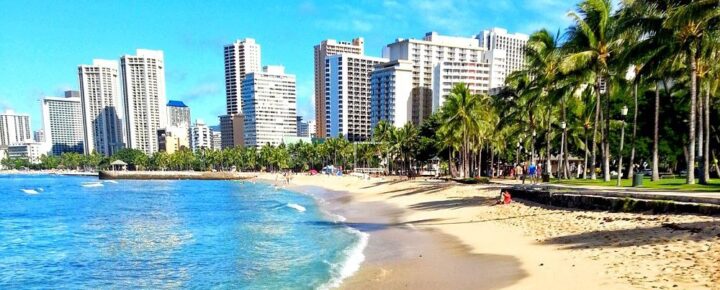


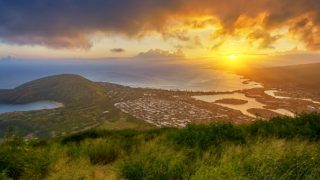
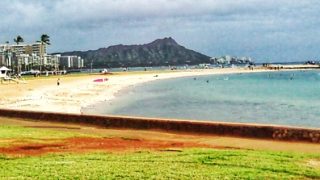
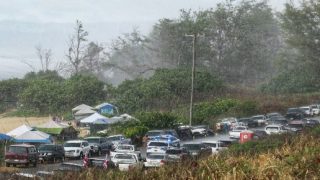
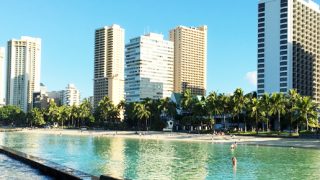
To Whom it may concern;
Shifting beach sand has been a problem for East Coast beaches in Florida since I lived there in the late 70s. They’d build blocker walls perpendicular to beach but the sand would still pile up on the down cross flow side.
I think the problem may be that the water flowing around the blocker walls, drags sand with it. If someone (group of people) sunk vertical posts in a direction perpendicular to beach & securely attached 3 layérs of netting to those posts (center net having holes smaller than average sand grain size and outer layers of structurally Very Strong & Resistant To Corrosion nets); sea water could flow directly through netting while not allowing sand to pile up on down flow side.
We were there last February and it was so great, that we plan on coming back this year.
The last time I was at Waikiki (Dec 2022), there was so much sand in the ponds that they barely qualified for the name. Take some of the sand out of there and put it on the main beach. Redistributing dirt is a small price to pay for keeping a major jewel in your economic crown beautiful.
Maybe nature needs to naturally erode beach. Let nature do its job
It seems that a society living on ever changing, ever evolving volcanically-formed islands in the middle of the ocean might have an inkling of insight as to what their future is. But no, they allowed huge, towering hotels to be built at water’s edge when, as history clearly shows, that water’s edge will not be there very long. It will be somewhere else. Go ahead and blame the ubiquitous “global warming”, or whatever you’re calling it today, on a completely natural process and expected result.
I have an idea, radical tho..
Find me land for all hotels on the ocean side of Kala Kua Ave. Demolish them and restore the beach and marsh land / trees plants leading to the beach. There is no reason to build so close to the ocean. It’s a waste of money and I have absolutely no sympathy for these big hotel chains and business. Wakiki was not planned well.
State Sounds Alarm: Hawaii’s Native Birds Urgently Need Help.
State Sounds Alarm: Hawaii’s Ecosystem under Attack by Numerous Invasive Species.
State Sounds Alarm: Hawaii is the Extinction Capitol of the world.
State Sounds Alarm: We Need to Care More About Things That Actually Matter.
State Sounds Alarm: We Only Care About Tourism
It’s time to start regression from all beaches around the hawaiian island. We are islands with water rise. It will always be a loosing battle.
Is there anyway to make this a more prominent issue to the rest of the mainland states. Thousands of people from the mainland come to enjoy the finer things that Hawaii offers to the world. Make this issue a priority with the rest of the Country.
Here’s an idea: Instead of charging each tourist $25 to come into Hawaii, have them bring a a bag of sand to get in.
No thanks necessary. I just wanted my (1000th?) post to be funny.
Hi Joe.
Well you have a long way to go then to need to be funny. That makes 46 comments.
Aloha.
Aloha
I’m available and happy to volunteer April -September 2025, since I’m retired. Although, I would need accommodations for room and board.
Mahalo
Hold back the Pacific ocean? Did they think they could do that when they built on oceanfront?
Waikiki never was a beach historically. It was a Taro growing swamp. The ocean currents there aren’t conducive to building beaches in the area, they actually actively reduce whatever would be built up naturally. Mother Nature always wins…
Best Regards
Thank you not trying to blame this natural erosion on the global warming/climate change hoax or sea level rise.
Lol, sea level rise is real, ask the people of, bedono, serua, El bosqe, key West, Miami, etc. I’m guessing science wasn’t your best subject. The planet IS warming, do you think the glaciers are disappearing because they’re cold? Sheesh. Some people will claim fire isn’t real while they’re burning.
Trying to maintain a man made beach that is being overcome by sea level rise to keep tourists happy is the dumbest concept, almost criminal. Let the island be natural and the tourists will learn to appreciate the island for what it really is.
Agreed. Erosion is a natural process, but sea levels are rising, which in turn increases natural processes. There is a thing called mathematics.
Clearly all the beach “replenishment” has not worked nor will it work. If one end of a beach collects sand an another loses it, it must be determined if this is the historical norm or a result from construction, seawalls etc. The truly sustainable (lasting)solution will likely be removing groins, breakwalls, and even some buildings that interfere with natural sand migration. Short term profit vs sustainability is the nearsighted vision, unfortunately.
Waikiki beach used to be a swamp. The beach is made from barged in sand and pumped into the shoreline. Nature is just reclaiming what there was to begin with. IMO if it is man made then who has really control over it? Might be the company or entity who purchased the sand. Resort Maybe? Is there a thing as private owned sand? Have you ever wondered why in back of certain hotels the sand is different colored. Hilton Hawaiian Village -More golden Towards the Outrigger-More grey and white and toward the Circle Resort-More grey Rocky, Coral chunks, and gravel type sand. Funny how it’s the same beach isn’t it.
We were just at The Outrigger Waikiki on the Beach last month. I can recall many years ago that the sand all over Waikiki Beach was like sugar: soft and very comfortable to walk on. With all the pouring of sand replacements over the years, the beach has become full of coral and bits of hard stuff that it is almost unpleasant to walk bare-foot anymore. Plus there is a roll of coral right at the edge of the water that is painful to walk over. Even water shoes do not work as the small pieces of coral get inside the shoe’s holes. Probably, sifting of replacement sand would have been very expensive but would have maintained the softness of the beach sand.
I didn’t dig for it today, but I remember a BOH article about how the state is telling the Kaanapali hotels there is no help a they will just have to move back with the ocean moving up.
On Kaanapali, the Westin and the Kaanapali Alii have been battling erosion problems for years and the state has been firm on not allowing any type of mitigation. The Alii offered to rebuild their section of the beach walk (lost during very high swells) at their own expense and were rebuffed.
Many homeowners throughout Hawaii have begged to mitigate erosion and have been prevented from doing so, except for Obama’s place (it helps to know people).
If you take a look at the geological history of Hawaii, the islands are formed and then through collapse and erosion, disappear under the waves again. You an see this on google maps if you’re curious. Yet the state actually taking the position that we’re to allow the existing islands to erode without any kind of control. It isn’t like you can pick up a building and move it back from the shoreline. I think there are some measures that should be allowed even if you aren’t Obama to save valuable buildings from the sea
Hawai’i is trying to repair the damage of generations of humans trying to reshape her. Waikiki is fill and nobody listened to our elders. Nature will win in the long run when the powers that be decide it’s too expensive to keep up the fight.
Seem a little disingenuous of the state to want mindful tourists but to not be mindful of what mother nature is telling them.
In 2023 the Hawaii Department of Land and Natural Resources Board killed the restoration of Kaanapali beach, previously rated as best beach in the world attracting a half million tourists per year. The Board cited ‘managed retreat’ as the option.
Given the importance of beach upkeep to the tourist based economy and recreation opportunities by residents we shouldn’t sit back and watch the State shoot our collective foot off. Instead, the State should develop policies to protect and replenish our vital beaches, not ruin them.
Our natural systems of beach replenishment are significantly altered by development, roads, irrigation, etc. We must encourage alternate replenishment. To do so, our State must develop comprehensive policies promoting replenishment of our beaches.